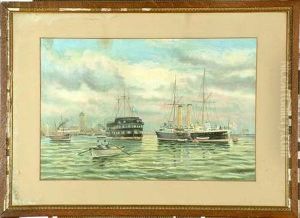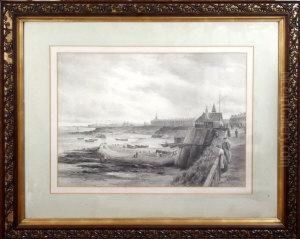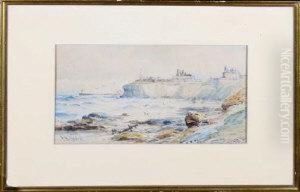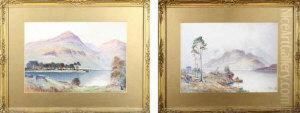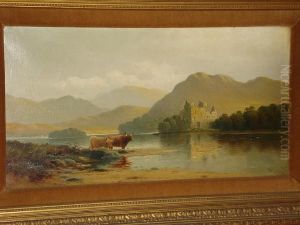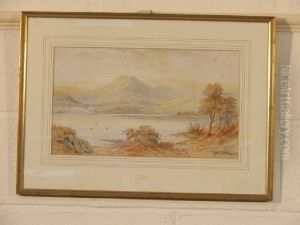John Davison Liddell Paintings
John Davison Liddell was a British artist, born in 1859, whose career spanned the late 19th and early 20th centuries, a period of significant change and evolution in the world of art. Liddell's work, while not as widely recognized as some of his contemporaries, provides a fascinating insight into the stylistic transitions of this era, capturing the shift from traditional to more modernist approaches. He was part of a generation that witnessed the impact of Impressionism, Post-Impressionism, and the early stages of Modernism, which influenced his artistic development and experimentation.
Liddell's artistic journey began in the United Kingdom, where he was immersed in the rich cultural and artistic heritage of the country. Despite the lack of comprehensive records on his early life and education, it is known that he was active in artistic circles that valued both the technical mastery of the classical tradition and the emerging trends that challenged it. His work, therefore, often straddles these two worlds, showcasing his ability to adapt and evolve his style in response to the changing artistic landscape.
Throughout his career, John Davison Liddell engaged with a variety of subjects, including landscapes, portraits, and still lifes, demonstrating a versatility and sensitivity to his surroundings. His landscapes, in particular, are noted for their ability to capture the essence and atmosphere of a place, reflecting the influence of Impressionism in his use of light and color. However, Liddell never fully abandoned the detailed approach of his classical training, resulting in works that balance impressionistic sensibilities with a certain degree of realism.
Despite his contributions to the art world, Liddell did not achieve the same level of fame as some of his peers. His work, however, has been appreciated by art historians and collectors who recognize the subtlety of his technique and the quiet beauty of his compositions. Today, his pieces can be found in various private collections and occasionally appear in exhibitions focused on the period's art.
John Davison Liddell passed away in 1942, leaving behind a body of work that continues to be studied and appreciated for its reflection of a pivotal moment in art history. His legacy, while understated, is a testament to the richness and diversity of artistic expression during a time of significant cultural and aesthetic shifts.
